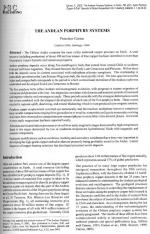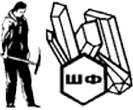Добрый день, Коллеги. Важное сообщение, просьба принять участие. Музей Ферсмана ищет помощь для реставрационных работ в помещении. Подробности по ссылке
The Andean Porphyry Systems
The Chilean Andes comprise the most richly endowed copper province on Earth. A total resource (including production) of about 490 million tonnes of fine copper has been identified in more than 63 porphyry copper deposits and numerous prospects.
Andean porphyry deposits occur along five metallogenic belts that extend from central Chile to southern Peru and northwest Argentina. They formed between the Early-Late Cretaceous and Pliocene. Within these belts the deposits occur in clusters associated with multiphase plutonic complexes. This relationship is particularly prevalent in the Late Eocene-Oligocene belt, the most prolific of all. The time span between the oldest and youngest belt corresponds to the period in which contractional tectonism of the Andean cycle was established and developed from Late Cretaceous to Recent.
The five porphyry belts reflect Andean tectonomagmatic evolution, with progressive eastern migration of volcanism and plutonism with time. Arc migration correlates with discrete and transient periods of increased convergence velocity and convergence angle. These periods coincide with the strongest deformation events that in turn correlated with the temporal development of each one of the five porphyry belts. These events resulted in regional uplift, shortening, and crustal thickening which in turn produced syn~orogenic erosion.
Porphyry copper emplacement occurred syn-tectonically and the resultant multiphase intrusive complexes have variable compositions ranging from granodiorite to tonalite, monzonite and quartz monzonite evolving in all cases from intermediate composition pre-mineral phases to more felsic intra-mineral phases. A reversal to more mafic magmatism has been reported locally.
Alteration and mineralisation processes evolved from early magmatic stages dominated by high-temperature fluids to late stages dominated by low or moderate-temperature hydrothermal fluids with magmatic and meteoric components.
Supergene modifications such as oxidation, leaching and secondary enrichment have been very important in developing the high-grade copper orebodies that are presently being profitably mined in the Andes. Lateral migration of copper-bearing solutions has developed proximal exotic deposits.




